Imago Mundi: Famous Babylonian World Map Is The Earliest Known In The World
A. Sutherland - AncientPages.com - This cuneiform ancient map of the Babylonian world is an archaeological treasure equal to the Rosetta Stone and the code of Hammurabi. It probably originates from Sippar, southern Iraq.
The Babylonian World Map, also known as Imago Mundi is usually dated to the 6th - 7th century BC. It is one of the oldest known world maps (if not the oldest) and certainly the most famous one.
A close-up view of the Babylonian map of the World. This partially broken clay tablet contains both cuneiform inscriptions and a unique map of the Mesopotamian world. Probably from Sippar, Mesopotamia, Iraq. 700-500 BCE. The British Museum, London.
According to the Babylonian view, this map represents the entire world known to them.
The tablet contains both a cuneiform inscription and a unique map of the Mesopotamian world at the time of Sargon (2300 BC) as a circle surrounded by water, with Babylon at its center.
The inscription indicates that it was a copy of a previous map and the locations featured on the map indicate that the original could not have been created earlier than the 9th century BC. The majority of the Babylonian Map of the World is preserved.
The earth is depicted with two concentric circles, one inside the other. The inner circle, the earth, contains eight small circles, most of which are labeled, which represent cities.
Babylon is shown in the center (the rectangle in the top half of the circle), and Assyria, Elam and other places are also named. The central area is ringed by a circular waterway labeled 'Salt-Sea'.
The outer rim of the sea is surrounded by what were probably originally eight regions, each indicated by a triangle, labeled 'Region' or 'Island', and marked with the distance in between.
The Babylonian Map of the World with translations. © Trustees of the British Museum. (After Reade, 2008). Image via Avary Taylor, Marian Feldman/Rice University
The cuneiform text describes these regions, and it seems that strange and mythical beasts, as well as great heroes, lived there, although the text is far from complete.
The regions are shown as triangles since that was how it was visualized that they first would look when approached by water.
On the map, “Assyria” (perhaps the Assyrian city Nineveh), “Der,” and “Susa,” the Elamite capital, are labeled. Two other circles are simply labeled “city” (Akkadian URU) and three circles show a central dot but are unlabeled. These unlabeled circles are perhaps representations of the “ruined cities” (ālānu abtūtu) mentioned in the text on the obverse. Babylon, rather than being represented as a circle, is rectangular with an encased dot.
Three geographic areas are labeled but not enclosed within a shape:
1) Urartu, a kingdom located in the plateau between Anatolia, Mesopotamia, Iran, and the Caucasus Mountains;
2) Habban, a Kassite tribal area in western Iran; and
3) Bit Yakin, the territory of an Aramaean tribal group located on the southern Euphrates. Topographical features include the unlabeled Euphrates River, which bisected Babylon in the first millennium BCE, a “mountain” (šadû), a “swamp” (apparu), and a “channel” (bitqu). The placement of the Euphrates, which is shown running from the “mountain” down to the “swamp,” seems to indicate that the mountain should be identified as those in southeastern Turkey, the source of the Euphrates, while the “swamp” would depict the marshlands along the southern Euphrates that existed in antiquity.
The channel, then, may be identified as an ancient waterway used to bypass the marshes and enter the Persian Gulf. The outer circle of the Map of the World is labeled “salt-sea” (Akkadian marratu). Four triangular “regions” (nagû) extend out from the ocean, although there were probably eight in total, the remaining three not being preserved on the fragmented tablet. Of the four semi-preserved nagû, only one has a description beyond lengths of distance, naming it “Great Wall, where the Sun is not seen.” ( Avary Taylor, Marian Feldman/Rice University).
The map is sometimes taken as a serious example of ancient geography, but although the places are shown in their approximately correct positions, the real purpose of the map is to explain the Babylonian view of the mythological world.
Written by – A. Sutherland - AncientPages.com Senior Staff Writer
Copyright © AncientPages.com All rights reserved. This material may not be published, broadcast, rewritten or redistributed in whole or part without the express written permission of AncientPages.com
Expand for referencesMore From Ancient Pages
-
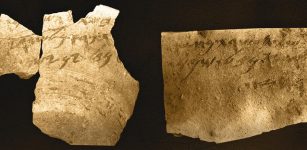 Two Scribes Penned 8th Century ‘Samaria Ostraca’ Inscriptions Unearthed In Samaria
Archaeology | Jan 23, 2020
Two Scribes Penned 8th Century ‘Samaria Ostraca’ Inscriptions Unearthed In Samaria
Archaeology | Jan 23, 2020 -
 Physical Evidence Of Ancient Atomic Wars Can Be Found World-Wide
Civilizations | Oct 6, 2015
Physical Evidence Of Ancient Atomic Wars Can Be Found World-Wide
Civilizations | Oct 6, 2015 -
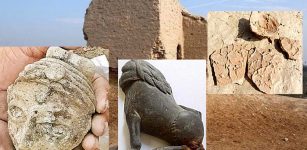 Buddhist ‘Dillu Roy’ Resembles Mohenjo Daro And Harappa And Now Unveils Its Ancient Secrets
Archaeology | Aug 25, 2020
Buddhist ‘Dillu Roy’ Resembles Mohenjo Daro And Harappa And Now Unveils Its Ancient Secrets
Archaeology | Aug 25, 2020 -
 10 Remarkable Advanced Ancient Technologies Ahead Of Their Times
Ancient Technology | Jul 23, 2019
10 Remarkable Advanced Ancient Technologies Ahead Of Their Times
Ancient Technology | Jul 23, 2019 -
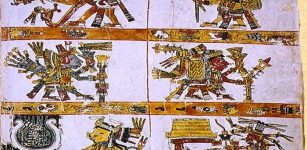 Codex Borgia: Pre-Columbian Mexican Manuscript Of Great Importance
Ancient Traditions And Customs | Sep 7, 2016
Codex Borgia: Pre-Columbian Mexican Manuscript Of Great Importance
Ancient Traditions And Customs | Sep 7, 2016 -
 Viking Cemetery In Lutomiersk And DNA May Solve The Mystery Of Norse Warriors In Central Poland
Vikings | Jan 7, 2025
Viking Cemetery In Lutomiersk And DNA May Solve The Mystery Of Norse Warriors In Central Poland
Vikings | Jan 7, 2025 -
 Mystery Of Arthur’s Stone In UK – Solved?
Archaeology | Aug 11, 2021
Mystery Of Arthur’s Stone In UK – Solved?
Archaeology | Aug 11, 2021 -
 New Study Challenges Theories Of Earlier Human Arrival In Americas – Archaeological Evidence Has Been Misinterpreted – Scientists Say
Archaeology | Apr 21, 2022
New Study Challenges Theories Of Earlier Human Arrival In Americas – Archaeological Evidence Has Been Misinterpreted – Scientists Say
Archaeology | Apr 21, 2022 -
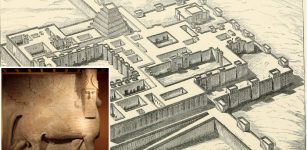 Magnetic Survey Finds Huge Previously Unknown Ancient Buildings In Abandoned Assyrian Capital Khorsabad
Archaeology | Dec 20, 2024
Magnetic Survey Finds Huge Previously Unknown Ancient Buildings In Abandoned Assyrian Capital Khorsabad
Archaeology | Dec 20, 2024 -
 Supernatural Beliefs Have Featured In Every Society Throughout History: New Research Helps Explain Why
Featured Stories | Apr 5, 2023
Supernatural Beliefs Have Featured In Every Society Throughout History: New Research Helps Explain Why
Featured Stories | Apr 5, 2023 -
 Mystery Of Hizir – One Of The Most Enigmatic And Extraordinary Ancient People
Ancient Mysteries | Oct 16, 2018
Mystery Of Hizir – One Of The Most Enigmatic And Extraordinary Ancient People
Ancient Mysteries | Oct 16, 2018 -
 ‘Collata Quipu’ May Explain Messages Hidden In Mysterious Writing Of Inca
Archaeology | May 10, 2017
‘Collata Quipu’ May Explain Messages Hidden In Mysterious Writing Of Inca
Archaeology | May 10, 2017 -
 How Greenland Got The ‘Wrong’ Name Thanks To Viking Erik The Red
Ancient History Facts | Mar 21, 2017
How Greenland Got The ‘Wrong’ Name Thanks To Viking Erik The Red
Ancient History Facts | Mar 21, 2017 -
 Rose Cross – Powerful Symbol That Existed Long Before Christianity
Ancient Symbols | Dec 3, 2017
Rose Cross – Powerful Symbol That Existed Long Before Christianity
Ancient Symbols | Dec 3, 2017 -
 Nazar Amulet – Blue Color Wards Off The Evil Eye According To Ancient Belief
Ancient Symbols | Mar 13, 2018
Nazar Amulet – Blue Color Wards Off The Evil Eye According To Ancient Belief
Ancient Symbols | Mar 13, 2018 -
 Famous Viking Ragnar Lodbrok – Legendary Fearless Sea-King Of The North
Featured Stories | Apr 24, 2016
Famous Viking Ragnar Lodbrok – Legendary Fearless Sea-King Of The North
Featured Stories | Apr 24, 2016 -
 Deciphered Dead Sea Scroll Reveals Secret Calendar And Two Events Not Mentioned In The Bible
Archaeology | Jan 23, 2018
Deciphered Dead Sea Scroll Reveals Secret Calendar And Two Events Not Mentioned In The Bible
Archaeology | Jan 23, 2018 -
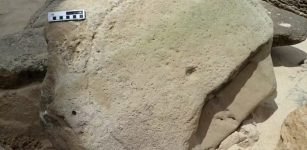 Our Ancestors Made Drawings In The Sand At The Beach 140,000 Years Ago – Scientists Say
Featured Stories | Jul 21, 2023
Our Ancestors Made Drawings In The Sand At The Beach 140,000 Years Ago – Scientists Say
Featured Stories | Jul 21, 2023 -
 Neanderthal Cave Engravings Identified As Oldest Known, More Than 57,000 Years Old
Archaeology | Jun 22, 2023
Neanderthal Cave Engravings Identified As Oldest Known, More Than 57,000 Years Old
Archaeology | Jun 22, 2023 -
 Baffling Structures Unearthed In A Place Where Prehistoric Human Remains Are Missing Is An Ancient Mystery
Ancient Mysteries | Apr 19, 2021
Baffling Structures Unearthed In A Place Where Prehistoric Human Remains Are Missing Is An Ancient Mystery
Ancient Mysteries | Apr 19, 2021


